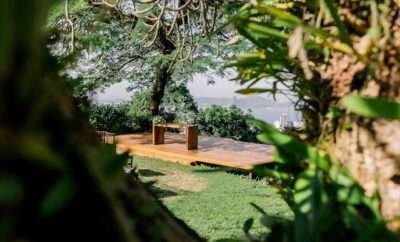
How to Build an Affordable Swimming Pool in Your Backyard
How to Build an Affordable Swimming Pool in Your Backyard
Building a swimming pool in your backyard will improve your health, mood and overall well being, giving you a great place to cool down, do exercise and spend time with friends and family. Due to a large number of designs, materials, and styles available for constructing a pool, it is important to know how to select the options that will suit your purpose and budget. Here are some DIY tips for building your own swimming pool.
1. Adopt a Simple Design
To keep the cost of your pool within your budget, you need to use the simplest design you can afford. This does not mean you cannot be creative and make it look beautiful. It just means that you should reduce the number of additional accessories like stone walls and other special features. A simple design will also reduce the time required to finish the construction so you can start reaping the benefits of your efforts early.
2. Choose a Flat Bottom and Box Shape
Standard swimming pools have different levels at the foundation. But for your DIY pool, you can save cost and make the digging easier by having just one level. Having a single flat bottom will also simplify the construction of the walls and make the pool easier to clean.
To make it easier to build, choose a box shape. Some liner manufacturers can weld a liner in this shape or you can use a tank. However, when using a tank, ensure that it is free of phosphates so you don’t promote the growth of algae in the pool.
3. Avoid Using Many Fittings
Swimming pools constructed by professionals usually have a variety of fittings. These include fittings for inflow and outflow of water, the filter, heater and other items like salt water systems and chlorinators. As the number of fittings increase, you will have to spend more on different types of plumbing components. That’s why you focus mainly on the inlet and outlet pipes and avoid more fanciful designs that will raise your construction costs significantly.
4. Make the Pool Safe
While you can use a minimalist design to save cost, you should not skimp on safety when constructing your pool. At the very least, you have to comply with basic safety rules for swimming pools which are listed in most building codes. Your pool must have a fence to restrict access to the pool by children and pets. Some building regulations also require you to install a special fence gate. Ensure that the gate opens outward and it is self-closing and self-latching, so your pool gate will never be left open. A good rule of thumb is to make your fence at least 5 feet high if the pool is over 18 inches deep.
5. Minimize the Depth
Although swimming pools require depth for stability, you can construct your natural pool to be shallower. Good depth for your pool would be 70 inches, but if you don’t care about driving safety, you can comfortably leave it at 60 inches. Shallow pools are easier to clean and they require less reinforcement. Bear in mind that the weakest part is the base where the wall joins the floor. If you are not sure about the amount of reinforcement you need, ask an engineer to help you check your retaining wall.
6. Pick a Suitable Location
Selecting the most appropriate spot for your swimming pool is just as important as constructing it properly. Choose a location that is open to sunlight and far away from trees. This will allow the water to get warmed up naturally and prevent many leaves from dropping into your pool. Avoid an area with strong winds because winds raise water evaporation and can make you feel very uncomfortable when you are wet. You can create a natural wind barrier by planting one row of trees or thick shrubs. Don’t locate the pool in any low-lying area so that it does not get flooded with debris and mud when there’s heavy rain.
7. Choose an Effective Circulation and Drainage Plan
Poorly planned drainage will stop you from enjoying your natural pool, to create a system to take out the groundwater from the pool area. This will be quite easy if you did not choose the lowest area in your backyard. Since you are building a swimming pool and not a pond, you should surround the pool with effective drainage channels. To keep your water fresh, clean and clear, use water coming from a fresh spring like a borehole or make use of filtered and treated potable water from a reliable source.
Constructing your natural DIY pool is not a difficult task as long as you are ready to do your research and focus on simplicity and safety. You should also be prepared to meet all the basic building codes that regulate the construction of residential swimming pools in your locality.














